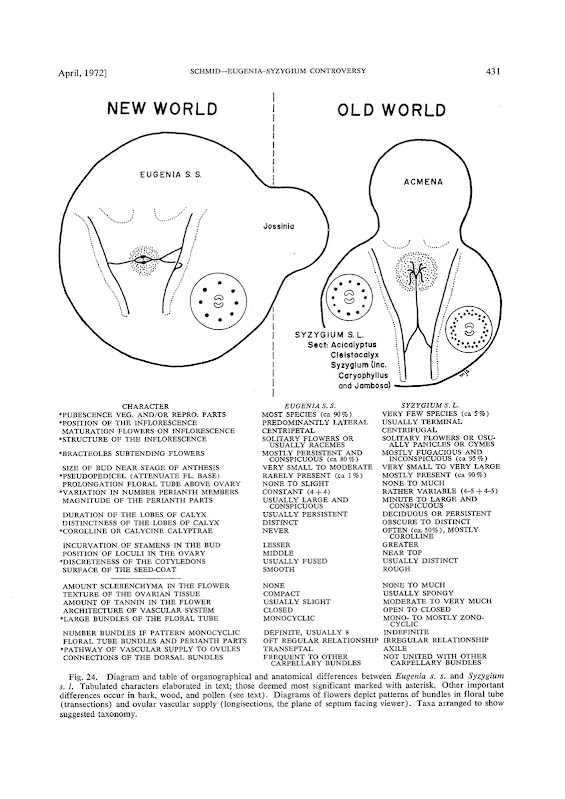ABSTRACT
Floral anatomy now provides additional, strong evidence confirming the distinctness of the mainly New World Eugenia s. s. and the strictly Old World Syzygium s. I. Most significantly, species of Eugenia s. s. have a transeptal vascular supply to the ovules whereas those of Syzygium s. I. have an axile one. Other features of floral histology and vasculature also support such a division. In addition, a review of the taxonomic literature revealed three hitherto neglected organographic criteria-nature of bracteoles, presence or absence of pubescence, and presence or absence of pseudopedicels-that sharply distinguish between Eugenia s. s. and Syzygium s. I. An ensemble of these and other organographic criteria further demonstrates the basic disparity of these taxa. The organography and histology of flowers of Eugenia s. I. are described in detail, with .26 characters contrasting the Old and New World species included in a table.
RUDOLF SCHMID, 1972, Amer. 1. Bot. 59(4): 423-436. 1972., Amer. 1. Bot. 59(4): 423-436. 1972.









































































